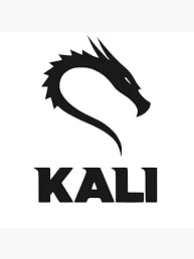Using Automated Vulnerability Discovery Tools in Kali Linux to Fortify Your Systems

As cybersecurity threats become increasingly complex, ensuring an impregnable security posture has never been more essential for Linux administrators and infosec professionals. Staying ahead of vulnerabilities that malicious actors could exploit requires resources like Kali Linux's robust suite of security tools - particularly its automated vulnerability discovery features, which help identify potential security breaches early on.
I'll explain the importance of automated vulnerability detection, the vulnerability analysis tools in Kali Linux, and how to set up and run automated scans. I'll also share best practices for automated vulnerability discovery.
Understanding Automated Vulnerability Discovery
Automated vulnerability discovery tools are vital to an effective and proactive security strategy. They automate the time-consuming and tedious task of scanning networks, systems, and applications for known vulnerabilities, saving security professionals valuable time to focus on fixing these weaknesses. Automated tools offer several benefits. Not only do they significantly increase efficiency and coverage rates, but they also ensure consistent scanning schedules, reduce risks of human error, and speed up vulnerability management processes.
What Automated Vulnerability Discovery Tools Does Kali Linux Offer?
 Kali Linux provides an impressive collection of automated tools to address specific vulnerabilities or security needs. One notable tool is Metasploit Framework, an advanced open-source platform that automates vulnerability exploitation. Penetration testers rely on Aircrack-ng to validate vulnerabilities in systems and networks by simulating cyberattacks. At the same time, Aircrack-ng serves a different function, testing network security by identifying weaknesses in wireless networks. Wireshark is a tool that provides in-depth views into network traffic, enabling the analysis of packets for potential vulnerabilities. Nmap is integral to vulnerability discovery by mapping network boundaries and identifying connected devices.
Kali Linux provides an impressive collection of automated tools to address specific vulnerabilities or security needs. One notable tool is Metasploit Framework, an advanced open-source platform that automates vulnerability exploitation. Penetration testers rely on Aircrack-ng to validate vulnerabilities in systems and networks by simulating cyberattacks. At the same time, Aircrack-ng serves a different function, testing network security by identifying weaknesses in wireless networks. Wireshark is a tool that provides in-depth views into network traffic, enabling the analysis of packets for potential vulnerabilities. Nmap is integral to vulnerability discovery by mapping network boundaries and identifying connected devices.
Considerations for Setting Up and Running Automated Scans
Setting up and running automated scans using these tools is straightforward, yet requires an in-depth knowledge of their features and functionalities. Metasploit provides the capability of automatically scanning targets against its database of vulnerabilities, making this approach to vulnerability analysis much faster. Aircrack-ng users must possess the necessary hardware and permissions to monitor wireless networks effectively and inject packets. On the other hand, Wireshark users should become adept at creating filters to efficiently sift through large volumes of data. Each tool has its own set of customizable options to tailor scans to specific environments or security requirements.
Interpreting results is just as essential. Security professionals must be able to recognize false positives while finding actionable vulnerabilities in the noise. This requires experience and deep domain knowledge.
Best Practices for Automated Vulnerability Discovery
Adherence to best practices for automated vulnerability discovery is vital to achieving maximum results. Configuring scans to minimize false positives and negatives is critical, as is regularly updating tools' databases and fine-tuning their scanning parameters. The frequency of scans must also be considered. Frequent checks enable timely detection, while more intensive scans may impact system performance or bandwidth. Finally, updating tools helps ensure the latest vulnerabilities can be detected quickly.
Practical Case Studies
 Automated vulnerability discovery using Kali Linux tools is best illustrated through real-life case studies. Consider, for instance, a mid-sized company that used Metasploit's automation features to identify and patch vulnerabilities in their web applications before they could be exploited in an offensive cyberattack or an agency that implemented Aircrack-ng to harden wireless networks against eavesdropping attempts. These examples demonstrate how automated vulnerability discovery makes an immediate and positive difference to security posture and prevents future cyber incidents.
Automated vulnerability discovery using Kali Linux tools is best illustrated through real-life case studies. Consider, for instance, a mid-sized company that used Metasploit's automation features to identify and patch vulnerabilities in their web applications before they could be exploited in an offensive cyberattack or an agency that implemented Aircrack-ng to harden wireless networks against eavesdropping attempts. These examples demonstrate how automated vulnerability discovery makes an immediate and positive difference to security posture and prevents future cyber incidents.
As illustrated above, automated vulnerability discovery tools are indispensable in improving Linux security. Kali Linux offers a suite of tools that make up its vital platform. By including these tools in regular security assessments and adopting an informed, proactive approach to vulnerability management, organizations can strengthen their defenses against constantly emerging cyber threats.
Our Final Thoughts on the Importance of Kali Linux's Automated Vulnerability Discovery Tools
Integrating Kali Linux's automated vulnerability discovery tools into an organization's security practices is not simply recommended; it is necessary in today's cyber threat landscape. Tools like Metasploit Framework, Aircrack-ng, and Wireshark help detect and mitigate vulnerabilities efficiently. By adopting them and adhering to best practices, Linux admins and infosec professionals can dramatically strengthen the security of their networks and systems.
Kali Linux's official documentation offers those looking to delve deeper into this field an abundance of information on using automated tools effectively. As cyber threats continue to emerge and we must adapt our defenses accordingly, Kali Linux remains an integral weapon in any admin's cybersecurity arsenal.















